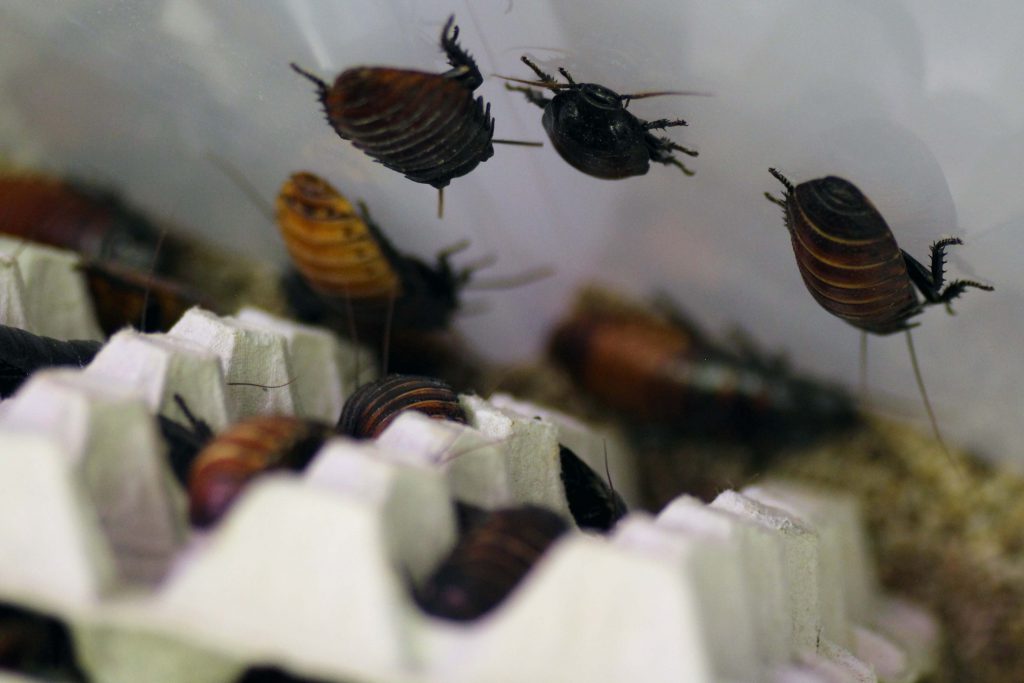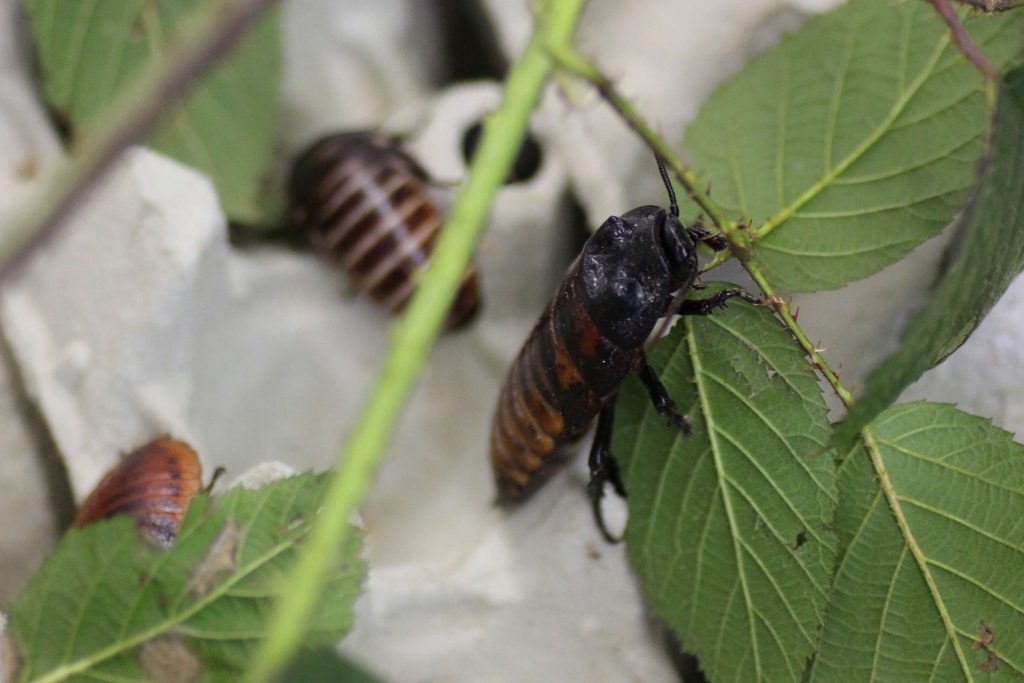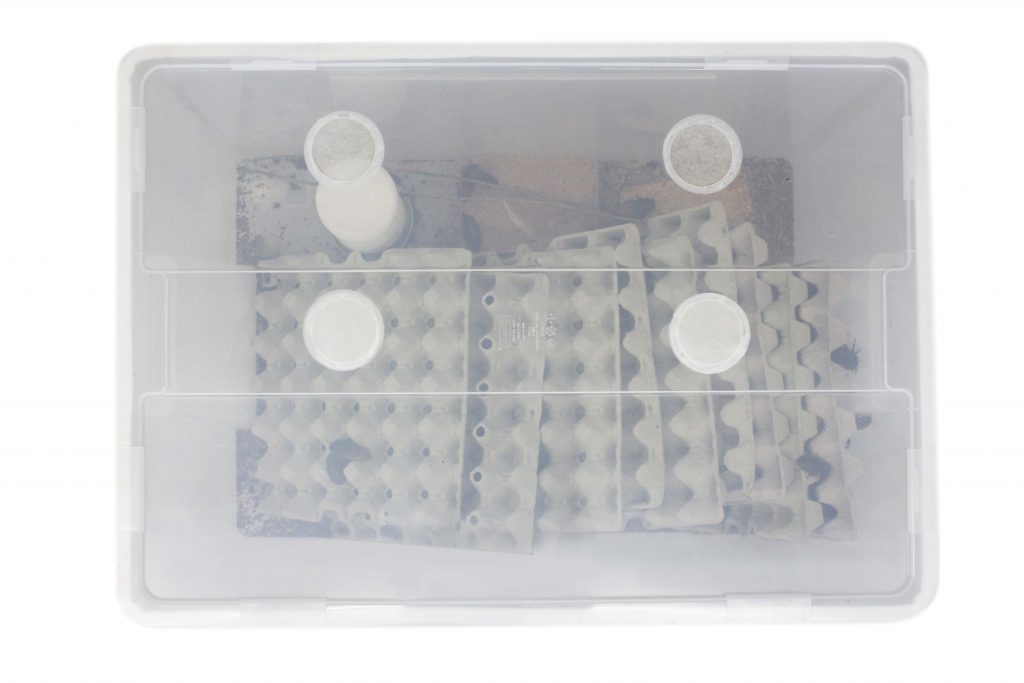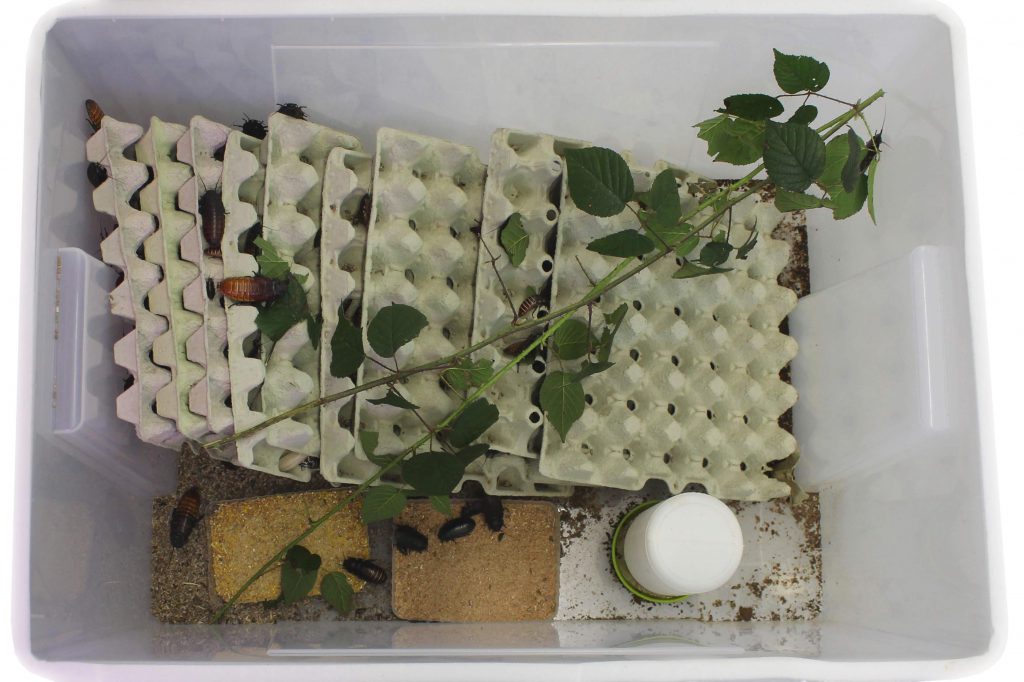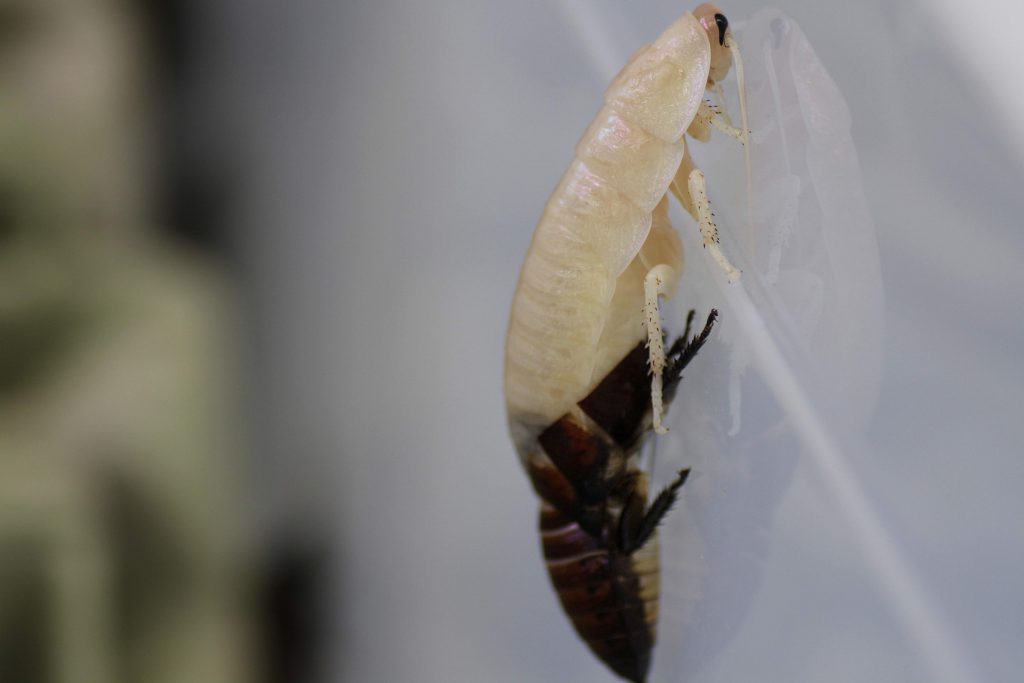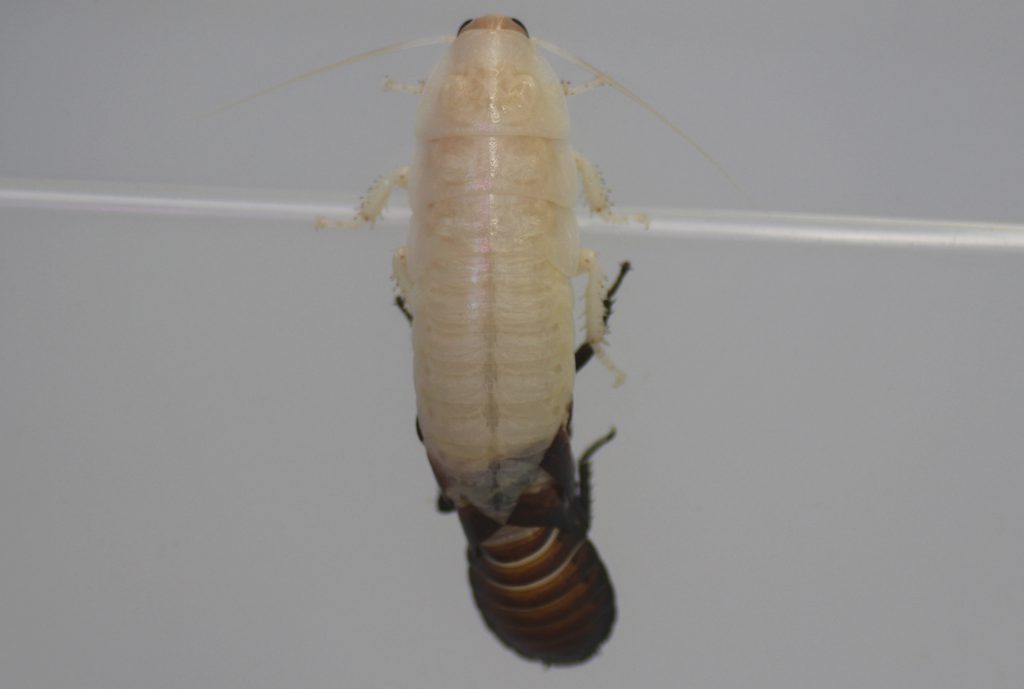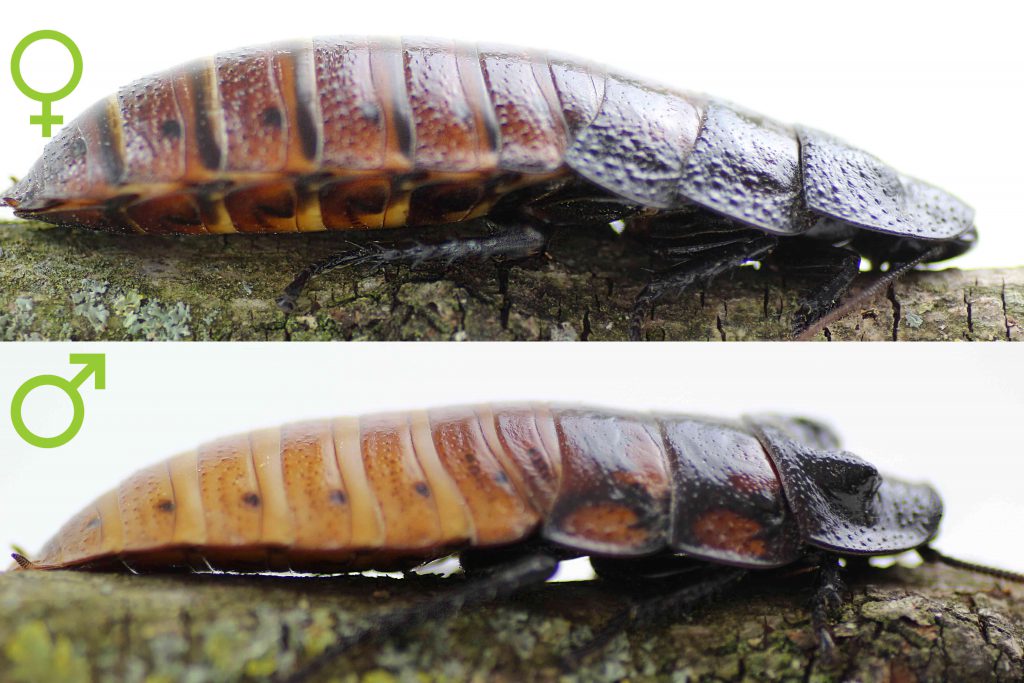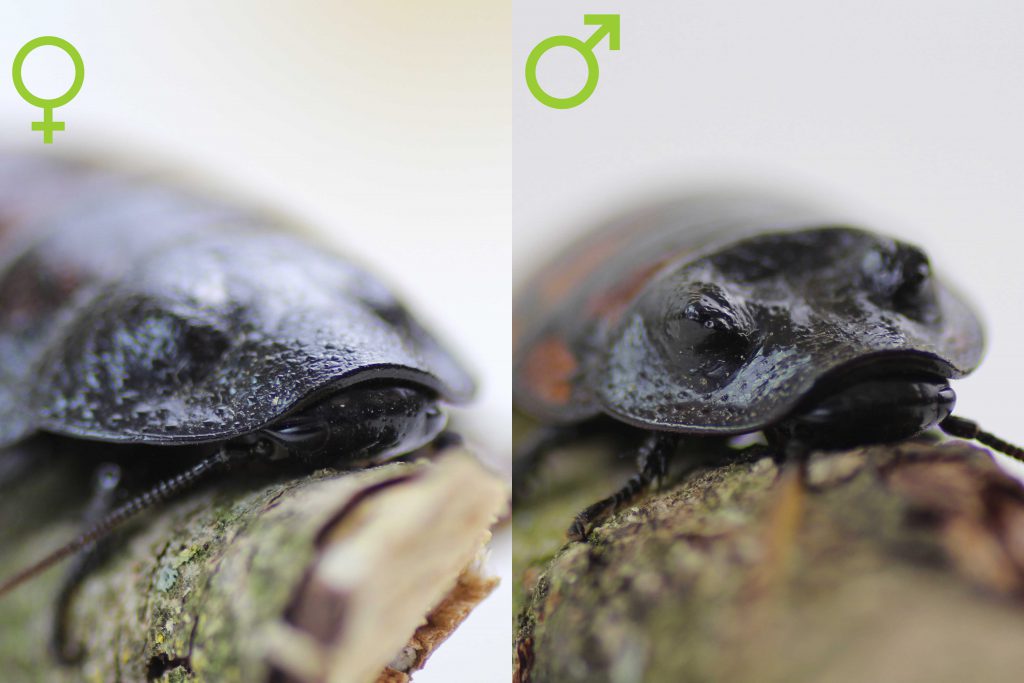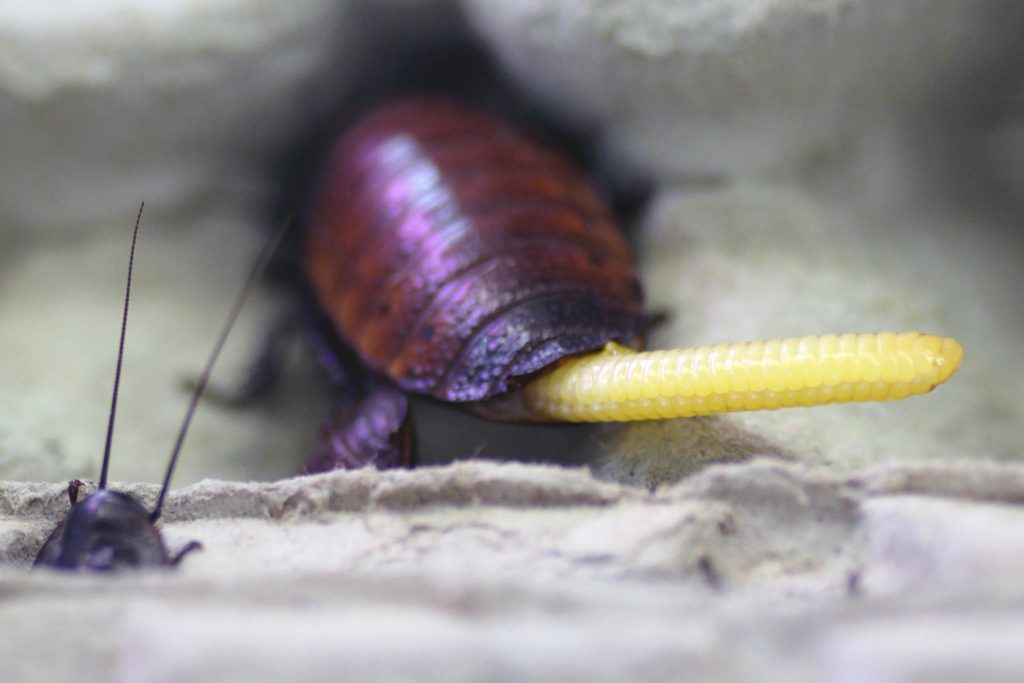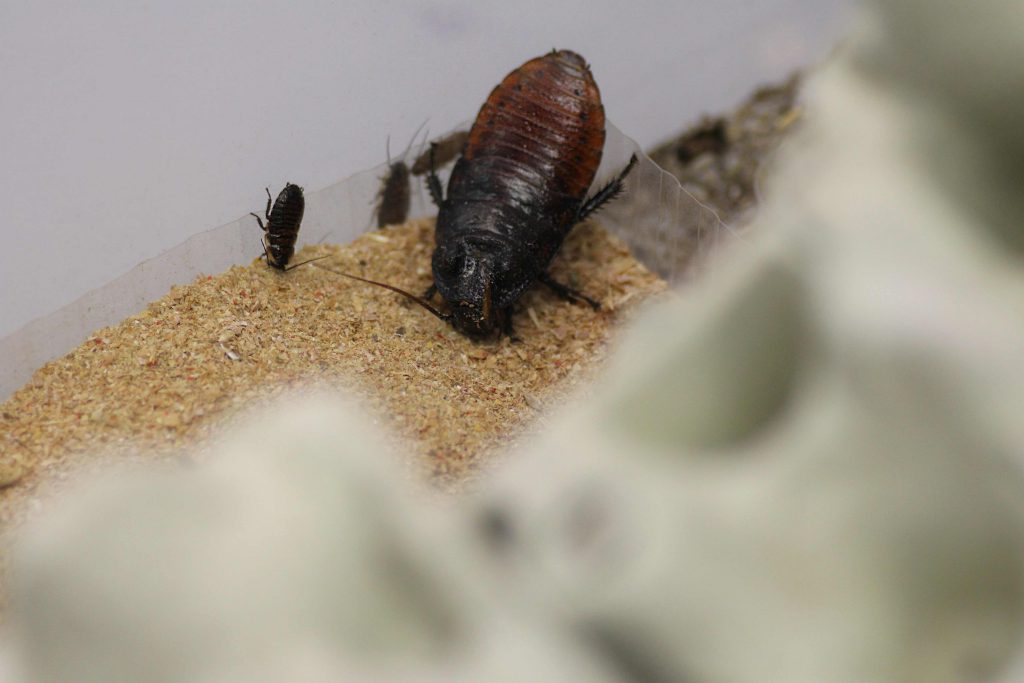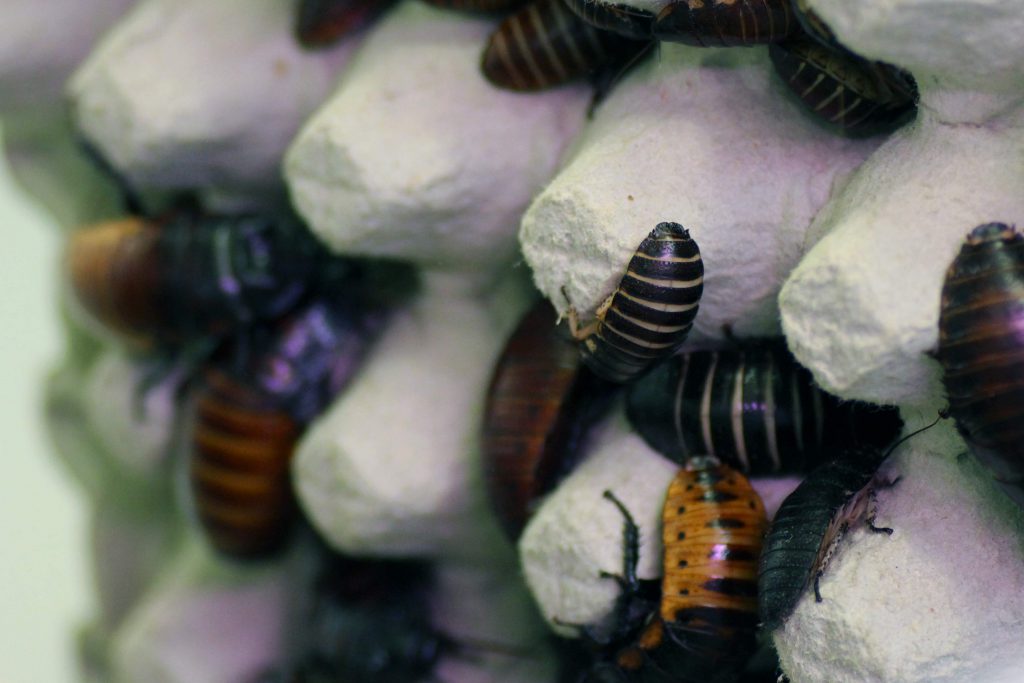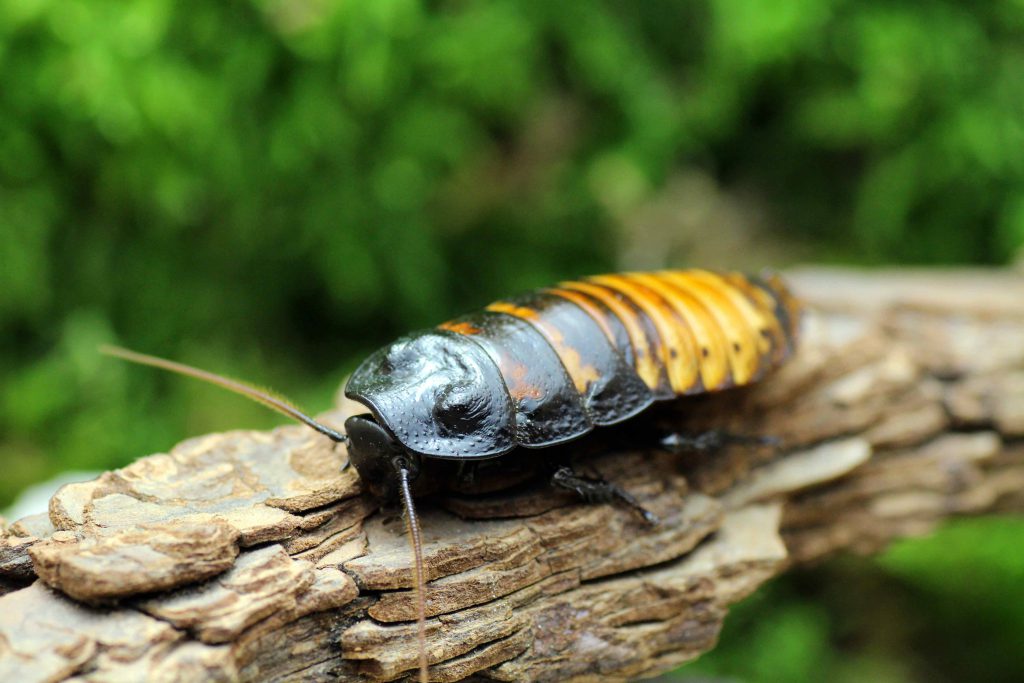
Gromphadorhina portentosa “Hissing Cockroach”

Origin:
- Madagascar (East Coast, Dry forest)

Temperature:
- 25-30 °C

Size:
- ♂ 5,0 cm
-
♀ 8,0 cm
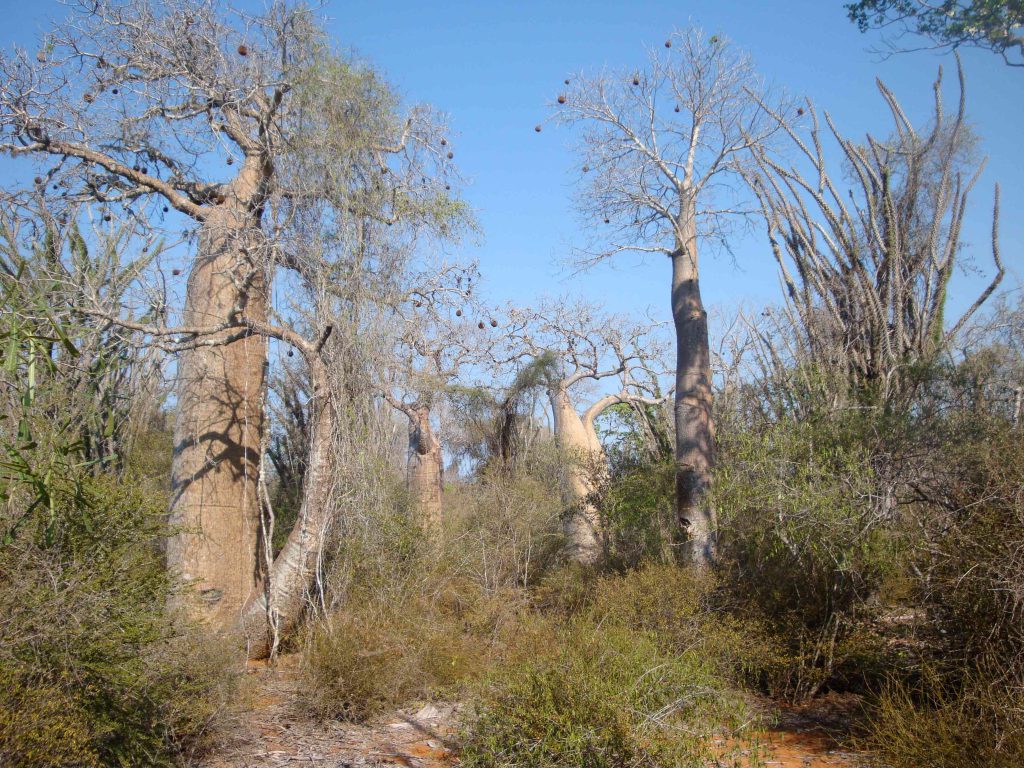
The Madagascar hissing cockroach is a prime example of how the keeping parameters can be deceived by the country of origin. Compared to a panther chameleon, which also originates from Madagascar, they have completely different requirements. On the east coast of Madagascar there are long dry seasons. During this time the trees shed their leaves. This is essential for survival in order to save water resources. Now our hissing cockroaches come into play. They need little water and use the foliage layers to protect themselves from sunlight and predators.
They owe their name to the ability to force air through their trachea at high pressure, producing a loud hissing sound. Sometimes you will be really surprised how loud such a small insect can make itself noticed. This is a major advantage when it is in danger, but also for communication with other conspecifics they can often be heard hissing.
Here, I recorded the hissing for you:
The behavioral patterns of the Madagascar hissing cockroaches are not only interesting but can also be frequently observed. The twilight and nocturnal animals are very clean and clean themselves at every opportunity. The male hissing cockroaches like to measure their strength and fight for the desired females. But nobody gets hurt and you can watch these situations relaxed.
Since they like to eat leaves from the trees in the rainy season, they are excellent climbers. It is amazing how they can carry their weight effortlessly even on smooth surfaces. As a reward you can attach a branch with leaves there. I like to use the evergreen blackberry vines. They are not treated by spraying and are available everywhere and at any time.
Cockroach Tank:
A plastic box or an aquarium are best suited as accommodation.
The container should have a size of at least 30 x 30 x 30 cm. There you can keep one or two males and three or four females together. The size of the tank is adapted to the individual breeding group. We use 130L boxes with the dimensions 78 x 56 x 44 cm. The ventilation area should be large enough so that no wetness or condensation water can form in the box. A fine gauze or organza is best suited as ventilation grid. This has the advantage that it does not let fruit or mourning flies through, because these can become a real plague in the breeding box. On the upper edge of the breeding tank we attach a foam seal for windows. It was intended as an escape protection, because the small hissing cockroaches often sat in the crack between the box and the lid. Surprisingly, the cockroaches stopped climbing to the edge of the lid completely, which is a great advantage in handling. Probably the animals love to crawl into small cracks to hide there.
To enable them to continue this behaviour, we offer the animals egg cartons. These increase the running surface and give the scrapers enough dark hiding places and cracks. The area-forming males therefore have more areas they can call their own and the egg cartoons can also be replaced quickly and cheaply.
To ensure that temperatures of 25-30°C are prevalent, a heating mat can be glued to the side of the box. This creates a temperature difference from left to right and the animals have different temperature zones which they can visit depending on their condition.
Some keepers scatter food as floor litter. However, as this causes the formation of mites and mould, we advise against this. As water source we use drinking pots for chickens which we prepare with kitchen paper at the water bowl area at the bottom of the can. This prevents animals from drowning and dirt from getting into the drinking water. For smaller breeding approaches a commercial bird bath is sufficient.
In a show terrarium you can simply use 5 cm of forest humus as a substrate. Put a thick layer of fallen leaves on top and put a few branches for climbing.
Breeding:
If you follow the listed instructions, breeding Madagascar hissing cockroaches is no problem. The animals go through 6 moulting stages which last 6 months under good conditions.
The moulting of the Madagascar-fluechroaches is an absolute highlight! The animals look for an enhancement or simply attach themselves to the edge of the box. Once they’re there, they shed their old skin and reappear as creamy white cockroaches. In this phase the animals are very soft and the chitin shell must first be dried and hardened. Therefore you should not take the animals in your hand during this time and best leave them alone. But you can watch the animals drying and regaining their normal colour.
First of all, one should make sure that both sexes of the Madagascar hissing cockroach are present in the breeding tank. You can see the difference in sex in adult animals with the naked eye. Males carry two clearly visible horns on their neck shield.
During mating the female puts out an ootheca, which is then fertilized by the male. Afterwards, this egg pack is pulled back into the female’s breast pouch and incubated there.
The incubation period is about two months until about 40 larvae hatch. Mass reproduction as with other cockroach species is therefore not possible. If, however, too many animals have developed in the breeding stage, the development times can be regulated simply by lowering the temperature.
The life expectancy of the animals is one to three years, depending on the keeping and the food supply.
Care and Food:
Madagascar hissing cockroaches do not make high demands on keeping or feeding. We do not spray any water into the breeding boxes at all and still reach a humidity of 65% with the evaporation from the water trough and the relatively low ventilation. This is completely sufficient for the well-being and for upcoming moulting.
Our dry food consists of a mix of wheat bran, proteins as in fish food and laying meal for chickens. We always serve this in feeding trays, so that the feed can be changed easily and hygienically and the feeding trays washed out if necessary. We offer the dry feed permanently and it should never run out.
Once a week we offer fresh green in the form of blackberry branches, vegetables (Chinese cabbage, carrots, zucchini or potatoes). Bananas or other sweet fruits are also very gladly accepted. Fruit should only be offered as much as the animals completely eat in 3-4 hours. Otherwise mould can develop or fruit flies can form in the containers.
Hissing cockroaches are very clean animals, which very often clean themselves thoroughly. However, there are places on their body that they cannot reach. Similar to the crocodile, which has its teeth brushed by a bird (crocodile guard), these cockroaches lives in symbiosis with a mite species. These small mites often sit on the throat and leg area of the cockroaches and free them from food remains. Practical for the cockroach and harmless for all other animals. This mite species dies as soon as its host is no longer alive and it does not suck blood from other animals as is often assumed.
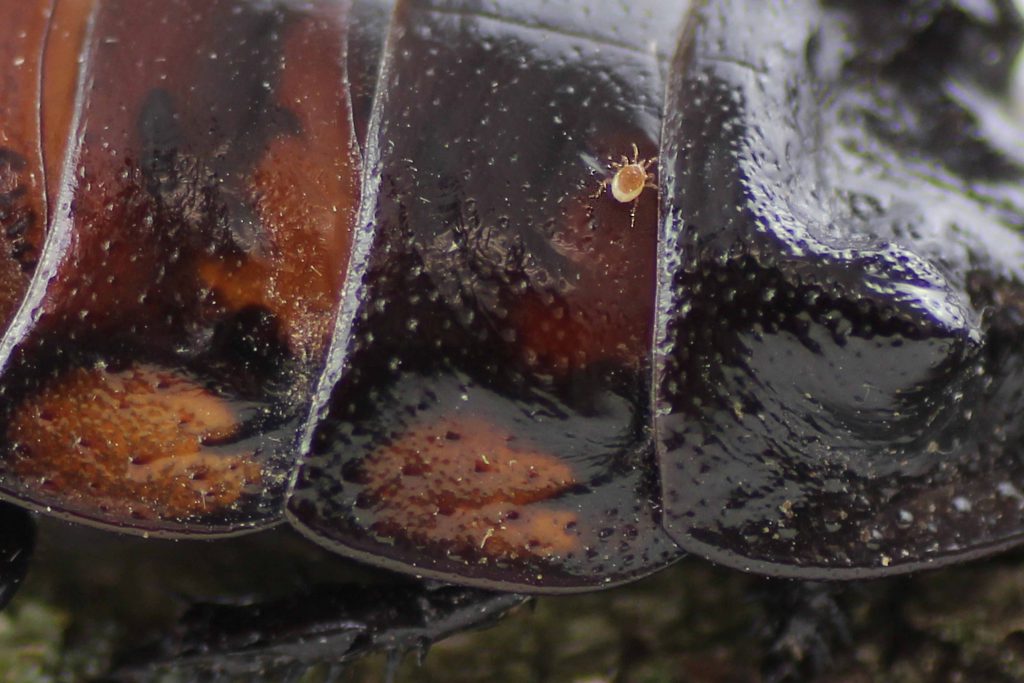

Fun Fact:
In the 90s, the London Zoo recommended to buy Madagascar hissing cockroaches instead of mammal pets, that are often not kept appropriately in captivity or cause allergies for children and teenagers.




